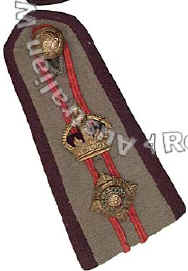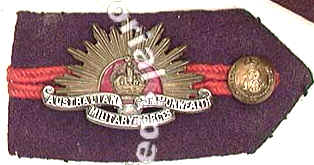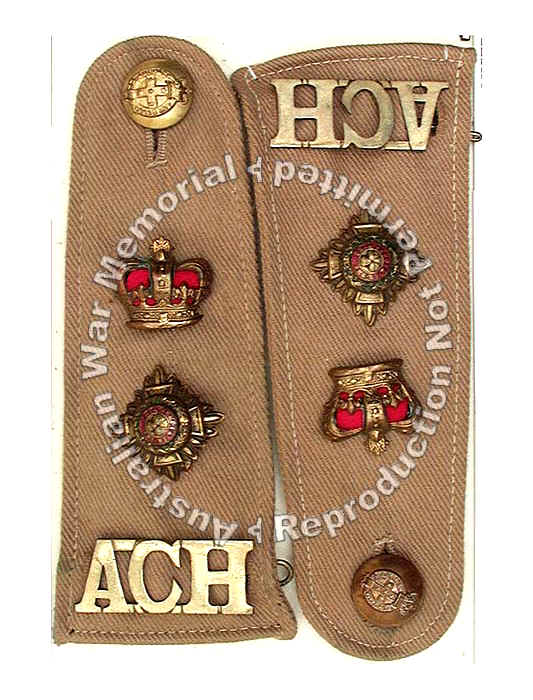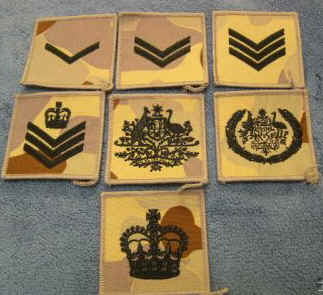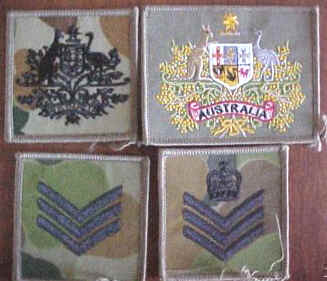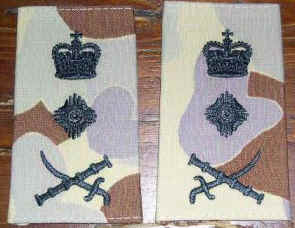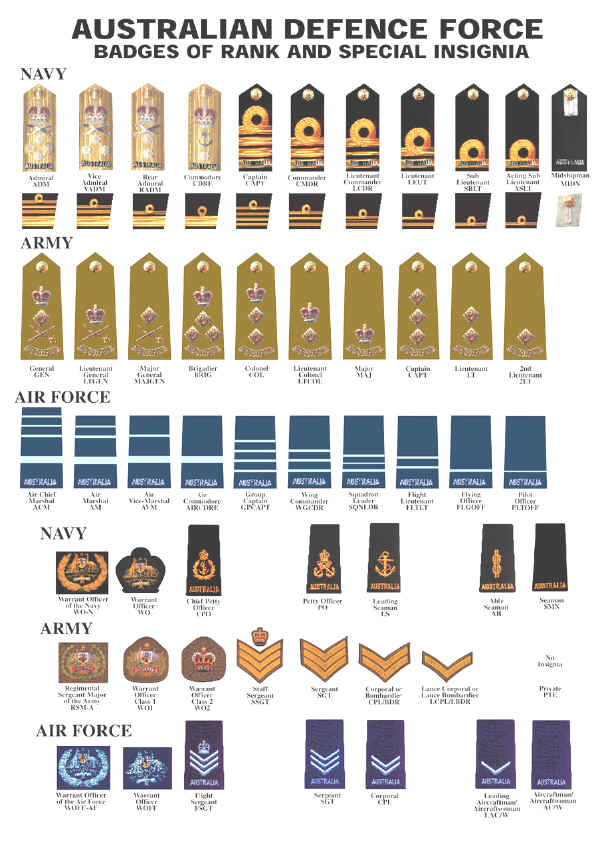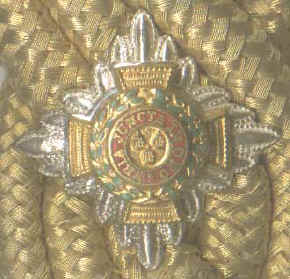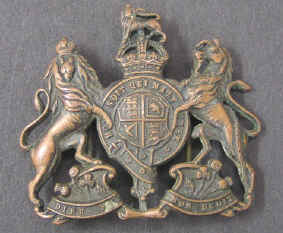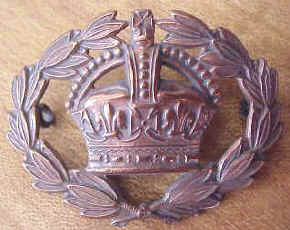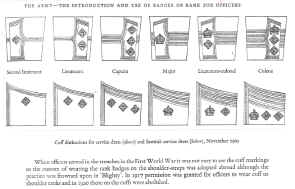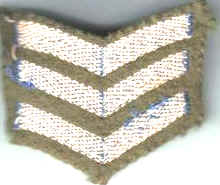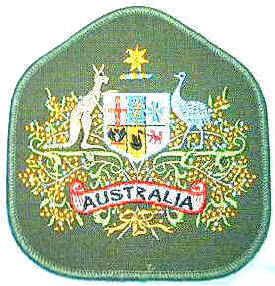|
Colour Sergeant
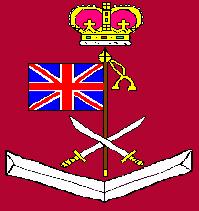 |
- The rank of colour
sergeant was introduced into the British Army in 1813 as the protector
of the ensign and the Colour.
There was/is no such rank in the Australian
Army except at the Royal Military College Duntroon, where it was a rank
within the Corps of Staff Cadets.
The escorts in a Colour Party are
often Staff Sergeants and for ceremonial occasions, when Colours are on
parade, they are referred to as the colour
sergeants. |
| The rank
did exist in Colonial Units. The most famous Australian ever to hold
the rank was General Sir John Monash who was Colour Sergeant of
4th Battalion Victorian Rifles. Details |
Lance Sergeant
(no longer used in
Australia)
The lance sergeant (by holding the raised
lance) would indicate to the other men where the brigade commander was
on the field. Remember this was a time when Brigade Commanders were in
the front line, leading by example.
-
Regarding the Lance Sergeant in
relation to Infantry Battalions it was used as a floating (appointment)
rank between
Corporal and Sergeant. It was and still is used in the British army as a definite
rank, but in the Australian army it appears it was used in a
semi-official way. A Lance Sergeant had the same pay as a Sergeant ,
same responsibilities and the same chevrons.
-
I believe though that
demotion for a Lance Sergeant was a matter of a stroke of the pen as the
rank was not official.
-
In some units the rank was referred to as the
still used Temporary Sergeant or Acting Sergeant.
| The
Irish Guards (along with the rest of the Household Division) have
a unique rank structure. Where the rest of the Army have Lance-
Corporals who wear one chevron and Corporals who wear two
chevrons, the Guards have Lance-Corporals who wear two chevrons
and the rank of Lance-Sergeant who is a full Corporal but who
wears three chevrons and is senior by appointment to a normal
Corporal.
The rank structure was appointed by Queen Victoria who
stated that her Guards would not wear only one chevron when
mounting guard outside the Royal Palaces so she stated that the
Lance-Corporal would wear two chevrons. That left the problem of
what the full Corporal would wear to show that he was a full
Corporal so the rank of Lance-Sergeant was appointed.
Even though
the Lance-Sergeant is only a full Corporal to the eyes of outside
Regiments and Corps, he still has full Sergeant's Mess privileges.
|
|
|
|
| Sergeant |
Lance Sergeant |
Lance Corporal |
|
Lance Corporal
The appointed rank of Lance
Corporal is based on the old British rank of the same name that was
originally called or referred to as 'chosen man'. In other words the one
next to take control of the section if the Corporal was to be killed or
wounded. In the Australian Army the rank is the only one for which a soldier
does not have to pass a specified test or series of tests. It is the first
rung on the ladder to Field Marshal. It is the only appointed rank and
demotion is easy if the man does not measure up.
| Another
theory: The word 'Lance'
means just that. In days past, mounted soldiers were considered
superior to those on foot. When unhorsed in battle, the lance
which the ex-mounted man carried indicated his superiority and
gave him certain prestige. From 'lance-man-of-foot', as he was
called, comes the modern 'lance' rank. (from the Dept of Defence site) |
2nd Corporal
(no longer used)
In WW1 in Engineer Units
(particularly Railway Units) the
rank of 2nd Corporal was used. It equates with Lance Corporal.
| The
pieces of fabric (shoulder straps) going from shoulder to neck on uniform shirts or
jackets is called an epaulette. It is possible but unusual to put
officer's badges of rank on them. More common is to put the badges
on a slide or a board and slide the whole lot over the epaulette.
These are some examples of both methods . . . |
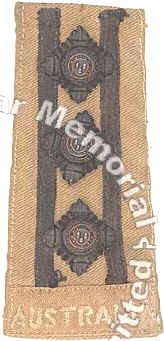 |
 |
 |
| Captain
(Chaplain) New Guinea WW2 |
1st
Lieutenant 2RAR Malaysia 1952 |
Lt
Col., ANGAU, WW2 (not an Army rank or layout) |
|

